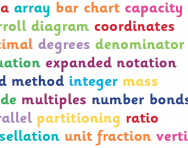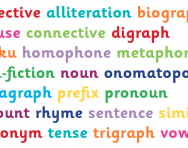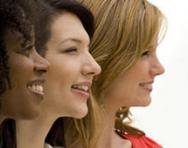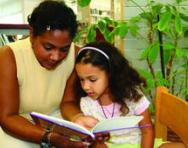Primary numeracy glossary for parents

The most important primary-school numeracy terms are listed below, with definitions. For a much more detailed, parent-friendly guide to how children are taught about each of these maths concepts in primary school, as well as examples, click on the link in the word.
You can purchase a downloadable and printable version of the complete Primary Maths Glossary (108 terms explained over 256 pages) in TheSchoolRun Bookshop.
TheSchoolRun also offers a free primary-school literacy glossary, a free primary-school science glossary and a free primary-school grammar glossary.
< and >
These symbols are referred to as the 'greater than' (>) and 'less than' (<) symbols. Children learn that they are used to show whether a number is bigger or smaller than another number (for example, 56 > 34 or 34 < 56).
12-hour and 24-hour clock
The 12-hour clock runs from 1am to 12 noon and then from 1pm to 12 midnight. The 24-hour clock uses the numbers 00:00 to 23:59 (midnight is 00:00).
2D shapes
2D shapes are two-dimensional, or 'flat'. Examples of 2D shapes are squares, triangles, circles and rectangles.
3D shapes
3D shapes are three-dimensional, and have a volume. Examples of 3D shapes are cubes, cuboids, spheres, cylinders and prisms.
Acute angle
An acute angle is one that measures less than 90˚.
Analogue and digital clocks / time
An analogue clock is a circular-faced clock with the numbers one to twelve around the outside and two hands, a shorter one to measure hours and a longer one to measure minutes. A digital clock is a clock which simply shows numbers to denote the time.
Area
Area is the term used to define the amount of space taken up by a 2D shape or surface. We measure area in square units : cm² or m².
Array
An array is a pictorial representation, a picture of rows of dots, to help children understand multiplication and times tables.
Arrow cards
Arrow cards are a maths aid used to help children partition numbers (divide them unto units, tens, hundreds, etc) and understand place value.
Ascending order
When a group of numbers are given in ascending order, this means they are given in order from smallest to largest (ascending means 'going up'). The opposite is descending order.
Associative property
The associative property states that when we add or multiply numbers it doesn't matter how we group them (we express this as (a + b) + c = a + (b + c) and (a × b) × c = a × (b × c) in formulae).
Average
In maths, the average value in a set of numbers is the middle value, calculated by dividing the total of all the values by the number of values.
Axes
Axes are the horizontal and vertical lines used to frame a graph or chart.
Bar chart
A bar chart is a chart that displays information (data) by using rectangular bars of different heights, arranged on a vertical axis and a horizontal axis.
Bar model
The bar model method is used in Singapore maths (also known as Asian maths mastery) to help children visualise maths problems, first by handling actual objects, then by drawing pictures of the objects or cubes / dots representing them and finally by drawing one long bar and labelling it with numbers.
Block graph
A block graph (or block diagram) is a simple chart which shows numbers on the vertical axis and labels on the horizontal axis. Each unit is represented by one block.
BODMAS
BODMAS is an acronym used to help pupils remember the correct order to complete mathematical calculations in: Brackets, Orders, Division, Multiplication, Addition, Subtraction.
Bridging through 10
The "bridging through ten" method is a mental maths technique used to add numbers when the answer is larger than 10.
Bus stop method
The 'bus stop' method (also known as short-hand division or short division) is a division technique children are taught in primary school. Children are usually taught the bus stop method once they are confident with chunking (another division technique).
Capacity
Capacity is the total amount of fluid that can be contained in a container. It is the word we use when we are measuring liquids (in litres or millilitres).
Cardinal numbers
Cardinal numbers allow us to count a set of objects and tell us about quantity (one, two, three, four, etc.).
Carroll diagram
A Carroll diagram is used to organise data and group it according to whether it fits certain criteria. The information is presented in rows and columns.
Chunking
Chunking is a method used for dividing large numbers. It involves using rough estimates of how many times a number will go into another number and then adjusting until the right answer is found (repeated subtraction of the divisor and multiples of the divisor – in other words, working out how many groups of a number fit into another number).
Circle
A circle is a 2D curved shape, every point of which is the same distance from a fixed point in the centre.
Circumference
The circumference is the measurement all the way around the outside edge of a circle.
Clockwise and anti-clockwise
When something moves in a clockwise direction, it is moving in the same direction as the hands on the clock. When something moves in an anti-clockwise direction, it is moving in the opposite direction. Children are taught about the language of direction from KS1 onwards.
Coordinates
Coordinates are numbers which determine the position of a point or a shape in a particular space (a map or a graph). Points are marked by how far along they are on the x axis (the horizontal axis) and how far up they are on the y axis (the vertical axis).
Column method
The column method of addition and subtraction is the method where numbers are 'carried' and 'borrowed'. The numbers to be added and subtracted are set up in columns of units, tens, hundreds, etc.
Commutative property
The commutative property says that we can move numbers around within number sentences without affecting the results of our calculations; this can be expressed in algebra as a + b = b + a and a × b = b × a.
Complementary addition (subtraction on a number line or the jump strategy)
'Complementary addition' is a subtraction method that involves putting the smaller number at the start of a number line and then jumping up to the bigger number (it's also known as the 'jump strategy'). This makes the concept of subtraction being about finding the difference between two numbers very clear.
Converting into same units
Converting into the same units of measurement means understanding that the same length, capacity or weight can be expressed in different units of measurement. For example, weight can be shwon in kilograms (kg) but also grams (g); there are 1000g in 1kg.
Cube numbers
A cube number is a number that is the product of three numbers which are the same. In other words, if you multiply a number by itself and then by itself again, the result is a cube number. To write the mathematical formula for cube numbers we add a small 3 next to and above the number, for example: 23.
Data handling
Data handling is the term used to refer to primary-school statistics. Children learn about how to collect, interpret and display data in pictograms, tally charts, block diagrams, bar charts, line graphs and pie charts.
Decimal
A decimal is a number expressed in the scale of tens. Commonly speaking we talk about decimals when numbers include a decimal point to represent a whole number plus a fraction of a whole number (tenths, hundredths, etc.).
Degrees
Degrees are the unit of measurement used to measure angles. A right angle is 90˚, a straight line angle is 180˚ and a full turn is 360˚. We use a protractor (an angle measurer) to measure degrees.
Denominator
The denominator is the bottom number of a fraction. So in the fraction 3/8 the denominator is 8. In the fraction 5/6 the denominator is 6.
Descending order
When numbers are put in descending order, they are ordered from largest to smallest. The opposite is ascending order (from smallest to largest).
Diagonal
A diagonal is a straight line joining two nonadjacent vertices of a shape, that is, two corners of a shape that are not next to each other.
Diameter
The diameter is the straight line going through the centre of a circle, connecting two points on the circumference.
Distributive property
According to the distributive property, multiplication distributes over addition. This can be expressed in algebra as a × (b + c) = a × b + a × c.
Division facts
Division facts are the division number sentences related to times tables. For example, 30 ÷ 3 = 10, 27 ÷ 3 = 9 and 24 ÷ 3 = 8 are all division facts for the 3x table.
Edge
In 3D shapes, the edges are the lines where two faces meet.
Equation
An equation is a number sentence where one side equals the other, for example 4 + 4 = 10 - 2.
Equilateral triangle
An equilateral triangle has three equal sides and three equal angles.
Equivalent fractions and simplifying fractions
When two fractions are equivalent, this means they are the same in terms of shape and size, but are expressed using different numbers (for example, 1/3 is equivalent to 2/6 or 3/9). Simplifying a fraction means finding an equivalent fraction where the numbers are reduced as much as possible.
Estimate
An estimate is sometimes called a 'clever guess'. Estimating means roughly calculating or judging a number or value.
Expanded notation
Expanded notation is writing numbers or number sentences in which the numbers are partitioned (so 67 + 43 could be written as 60 + 7 + 40 + 3).
Face
In 3D shapes, the faces are the flat parts of the shape.
Factor
A factor is one of two or more numbers that divides a given number without a remainder. In the number sentence 4 x 5 = 20, both 5 and 4 are factors of 20.
Finding the difference between two numbers
Finding the difference between two numbers means subtracting the smaller number from the larger number. This concept is usually taught with complementary addition (subtraction on a number line).
Formula
A formula is a group of mathematical symbols and numbers that show how to work something out. Formulae children will learn in primary school include the formula for calculating the perimeter and area of 2D shapes and the formula for the volume for 3D shapes.
Function machines
A function machine is a visual aid often used in maths lessons to demonstrate and simplify the concept of functions in mathematics. You can think of it as a magical box that takes an input, performs a specific operation on it, and then produces an output.
Grid method
The grid method is a written technique used to teach children multiplication. It involves partitioning numbers into tens and units before they are multiplied, and placing them in a grid. The numbers are then multiplied two by two and the results are added together to give a total answer.
Highest common factor
The highest common factor of two numbers is the largest whole number which is a factor of both. A factor is one of two or more numbers that divides a given number without a remainder.
Horizontal
A horizontal line is a line that runs from right to left, like the horizon.
Imperial units
Imperial units of measurement were used in the UK before the adoption of the metric system. According to the national curriculum, children in Y5 are taught about imperial measurements.
Improper fraction
An improper fraction is one that is 'top-heavy' so the numerator is bigger than the denominator, for example 7/3.
Investigation
Carrying out a mathematical investigation means applying skills and knowledge to solving problems. Investigations differ from word problems because there isn't always just one way of one way of working them out and the solution might have to be found through trial and error. Often, there is not just one answer; there could be several.
Integer
An integer is a whole number. This can be a negative or positive number; 0 is also an integer.
Inverse operation
Inverse operations are opposite operations; one reverses the effect of the other. Subtraction is the inverse of addition and division is the inverse of multiplication.
Isosceles triangle
An isosceles triangle has two equal sides and two equal angles.
Line graph
A line graph is used to display information which changes over time. It is plotted on a graph as a series of points joined with straight lines.
Long division
Long division is a written method of dividing numbers (usually a three- or four-digit number by another large number).
Long multiplication
Long multiplication (or column multiplication) is a written method of multiplying numbers (usually a two- or three-digit number by another large number). As in column addition and column subtraction, the numbers are positioned in columns according to their place value.
Lowest common denominator
The lowest common denominator (or least common denominator) is the smallest number that is exactly divisible by each denominator of a set of fractions.
Lowest common multiple
The lowest common multiple of two numbers is the smallest whole number which is a multiple of both. A multiple is a number that can be divided by another number a certain number of times without a remainder.
Mass
Mass refers to the weight of an object. It is usually measured in grams and kilograms.
Mean
The mean is the total of all the values in a set of data, divided by the number of values.
Median
The median is the middle number in a list of numbers, ordered from smallest to largest.
Mirror line
A mirror line is the central line which can be drawn on a symmetrical shape to show that both sides of the shape are exactly the same.
Mixed number
A mixed number is made up of a whole number and a fraction, for example 9 3/4.
Mode
The mode is the value that appears most often in a set of data. In this case, the mode is 9 seconds.
Multiple
A multiple is a number that can be divided by another number a certain number of times without a remainder. In the number sentence 4 x 5 = 20, 20 is a multiple of 4 and a multiple of 5.
Negative numbers
A negative number is a number smaller than 0 (for example, -1, -3, -36).
Net
A net is what a 3D (three-dimensional) shape would look like if it were opened out flat.
Number bonds
Number bonds are the pairs of numbers that make up a given number (number bonds to 10 are 1 + 9, 2 + 8, 3 + 7, 4 + 6, 5 + 5; number bonds to 20 are 1 + 19, 2 + 18, 3 + 17, 4 + 16, 5 + 15).
Number facts
Number facts are basic addition, subtraction, multiplication and division calculations that children should learn to recall instantly.
Number line and number ladder
A number line is a straight, horizontal line with numbers placed at even increments along the length. It’s not a ruler, so the space between each number doesn’t matter, but the numbers included on the line determine how it’s meant to be used. A number ladder is the vertical version of a number line.
Number sentence
A number sentence is an arrangement of numbers and symbols, such as the following: 6 + 7 = 13 (addition number sentence), 45 - 6 = 39 (subtraction number sentence), 8 x 9 = 72 (multiplication number sentence), 48 ÷ 8 = 6 (division number sentence).
Number square
A number square is a primary-school maths aid, a square filled with numbers (ordered sequentially). Younger children will often use a number square with numbers from one to 20. You'll also commonly see number squares from one to 100.
Numerator
The numerator is the top number of a fraction. So in the fraction 3/8 the numerator is 3. In the fraction 1/9 the numerator is 1. If a fraction has 1 as its numerator, it is called a unit fraction.
Obtuse angle
An obtuse angle is one that measures between 90˚ and 180˚.
Odd and even numbers
An even number is a number that can be divided into two equal groups. Even numbers always end in 2, 4, 6, 8 and 0. An odd number is a number that cannot be divided into two equal groups. Odd numbers end in 1, 3, 5, 7, 9.
Operation
The four mathematical operations are addition, subtraction, multiplication and division.
Ordinal numbers
Ordinal numbers (first, second, third, etc.) tell us the position of an item in a list. Dates are ordinal numbers.
Parallel
Parallel lines are straight lines that always stay the same distance from each other and never meet.
Partitioning
Partitioning means separating numbers into the tens, units, hundreds, thousands, etc. that make them up (so 2967 is 2000 + 900 + 60 + 7). Partitioning helps children understand place value.
Percentage
A percentage is a number or ratio expressed as a fraction of 100. When we talk about percentages, we imagine that 'a whole' has been divided into 100 equal parts.
Perimeter
The perimeter is the distance around the edge of a 2D shape.
Perpendicular
When two lines are perpendicular, they are at right angles to each other.
Pictogram
A pictogram is a chart that uses pictures to represent data. Pictograms are set out in the same way as bar charts, but instead of bars they use columns of pictures to show the numbers involved.
Pie chart
Pie charts are circular charts divided up into sections (or 'slices') to represent values of different sizes.
Place value
Place value is the value of each digit in a number. It means understanding that 582 is made up of 500, 80 and 2, rather than 5, 8 and 2.
Polygon
Polygons are 2D shapes with straight, fully closed sides. Polygons can have any number of sides. Common polygons are triangles, squares, pentagons, hexagons.
Prime number
A prime number is a number greater than 1 that cannot be divided evenly by any number other than itself or 1. For example: 13 is a prime number because you cannot divide it (without a remainder) by any number except 13 or 1.
Prism
A prism is a 3D shape with flat sides and two identical ends. Prims have the same cross-section all along the shape, from end to end.
Probability, chance and likelihood
Probability (or chance, or likelihood) tells us how likely something is to happen. It can be described in words, or more accurately in terms of fractions and percentages.
Product
The product of two numbers is the result you get when you multiply them together (for example, 12 is the product of 3 and 4 and 20 is the product of 4 and 5).
Proportion
Proportion tells us about a portion or part in relation to a whole.
Pyramid
A pyramid is 3D shape with a polygon base and flat (triangular) sides that join at a common point (the apex).
Quadrilateral
A quadrilateral is a 2D shape with four sides. The following shapes are quadrilaterals: square, rectangle, rhombus, trapezium, parallelogram, kite.
Radius
The radius is the distance from the centre of a circle to the edge of the circle.
Range
The range is the difference between the lowest value and the highest value in a data set.
Ratio
A ratio compares values, telling us how much of one thing there is compared to another thing.
Reflection of shapes
Reflecting a shape in a mirror line means drawing a symmetrical copy of the shape, flipped over the line (exactly the same size but facing in the opposite direction).
Reflective symmetry
Reflective symmetry is when a shape or pattern is reflected in a line of symmetry or a mirror line. The reflected shape will be exactly the same as the original, the same distance from the mirror line and the same size.
Reflex angle
A reflex angle is an angle that measures between 180˚ and 360˚.
Regular and irregular shapes
Regular shapes have sides that are all equal and interior (inside) angles that are all equal. Irregular shapes have sides and angles of any length and size.
Right angle
A right angle is an angle that measures 90˚. It is also known as a 'quarter turn' because it is a quarter of a full turn, which measures 360˚.
Right-angled triangle
A right-angled triangle is a 2D shape with three sides and an angle that measures 90º.
Roman numerals
Roman numerals are the numbers that were used in ancient Rome, combinations of letters from the Latin alphabet (I, V, X, L, C, D and M).
Rotation of shapes
Rotating shapes means moving them around a fixed point (clockwise or anticlockwise, and by a certain number of degrees). The shape stays the same, but its position in the space will change.
Rotational symmetry
Rotational symmetry is when a shape or pattern can be rotated or turned around a central point and remains the same.
Rounding numbers
Rounding numbers means adjusting the digits (up or down) to make rough calculations easier. We usually round numbers to the nearest 10, 100 and 1000.
Repeated addition
Repeated addition is a method of helping children understand multiplication. Children are asked to work out, for example, what 3 'lots of' 5 are. They will be shown that this can be written as 5 + 5 + 5 (repeated addition number sentence) as well as 3 x 5 (multiplication number sentence).
Scale factor
When we talk about increasing the size of a 2D shape the size by which we make the shape larger is described by its scale factor.
Scalene triangle
A scalene triangle is a three-sided 2D shape in which the sides are all unequal.
Shared between
'Shared between' is a term used in word problems to indicate division. Children learn that by sharing equally into groups they are dividing.
Square numbers
When you multiply a number by itself, the result is a square number. To write the mathematical formula for square numbers we add a small 2 next to and above the number, for example: 32.
Standard and non-standard units
Standard units are the units we usually use to measure the weight, length or capacity of objects (grams and kilograms, centimetres, metres and kilometres, millilitres and litres). Non-standard units are used by younger children to introduce them to the concept of measuring (for example: handspans, the length of a pencil).
Sum
The sum of two numbers is the answer you get when you add them both together (for example, the sum of 5 and 4 is 9).
Symmetry
Something is symmetrical when it is the same on both sides. A shape has symmetry if a central dividing line (the mirror line) can be drawn on it, to show that both sides of the shape are exactly the same.
Tally chart
A tally chart uses marks representing numbers to collect data quickly and efficiently. One vertical mark is used to represent each unit; when five objects are counted the fifth line is crossed through the first four.
Tessellation
Tessellation is when shapes fit together exactly with no gaps. Common examples of tessellating shapes are floor tiles.
Time intervals
A time interval is the length of time in between two given times.
Translation of shapes
In geometry translation means moving a shape into a different position, without changing it in any way.
Triangle
A triangle is a polygon with three sides and three angles. It is a 2D shape.
Triangular numbers
Triangular numbers are a sequence of numbers generated by arranging a pattern of dots into equilateral triangles.
Turns
A quarter turn is a 90˚ movement, clockwise or anti-clockwise. A half turn is 180˚ and a full turn is 360˚.
Two-step and multi-step problems
A two-step problem is a word problem that requires two operations to solve it; a multi-step problem requires more than two operations before the solution can be found.
Unit fractions
A unit fraction is a fraction where the numerator (top number) is 1 and the denominator (bottom number) is a whole number.
Venn diagram
A Venn diagram shows the relationship between a group of different things (a set) in a visual way, by sorting data into two or three circles which overlap in the middle. Each circle follows a certain rule, so any numbers or objects placed in the overlapping part (the intersection) follow both rules.
Vertex / vertices
In 3D shapes, the vertices are the points where two or more edges meet. The angles of a 2D shape are also sometimes referred to as 'vertices' (singular: vertex).
Vertical
A vertical line runs up and down the page, from top to bottom.
Volume
Volume is the amount of 3D space an object occupies or takes up.
Word problem or story problem
A word problem (also known as a story problem) is a 'real-life' scenario where a problem needs to be solved by way of a mathematical calculation.
Have we missed any numeracy terms that you'd like to see explained? Email requests for new glossary entries to us at [email protected]
You'll find English and literacy terms and vocabulary explained in our Primary literacy glossary for parents.
Printable version of the Primary Maths Glossary
Buy a downloadable and printable version of the complete Primary Maths Glossary (108 terms explained over 256 pages) for £4.99 in TheSchoolRun Bookshop.









